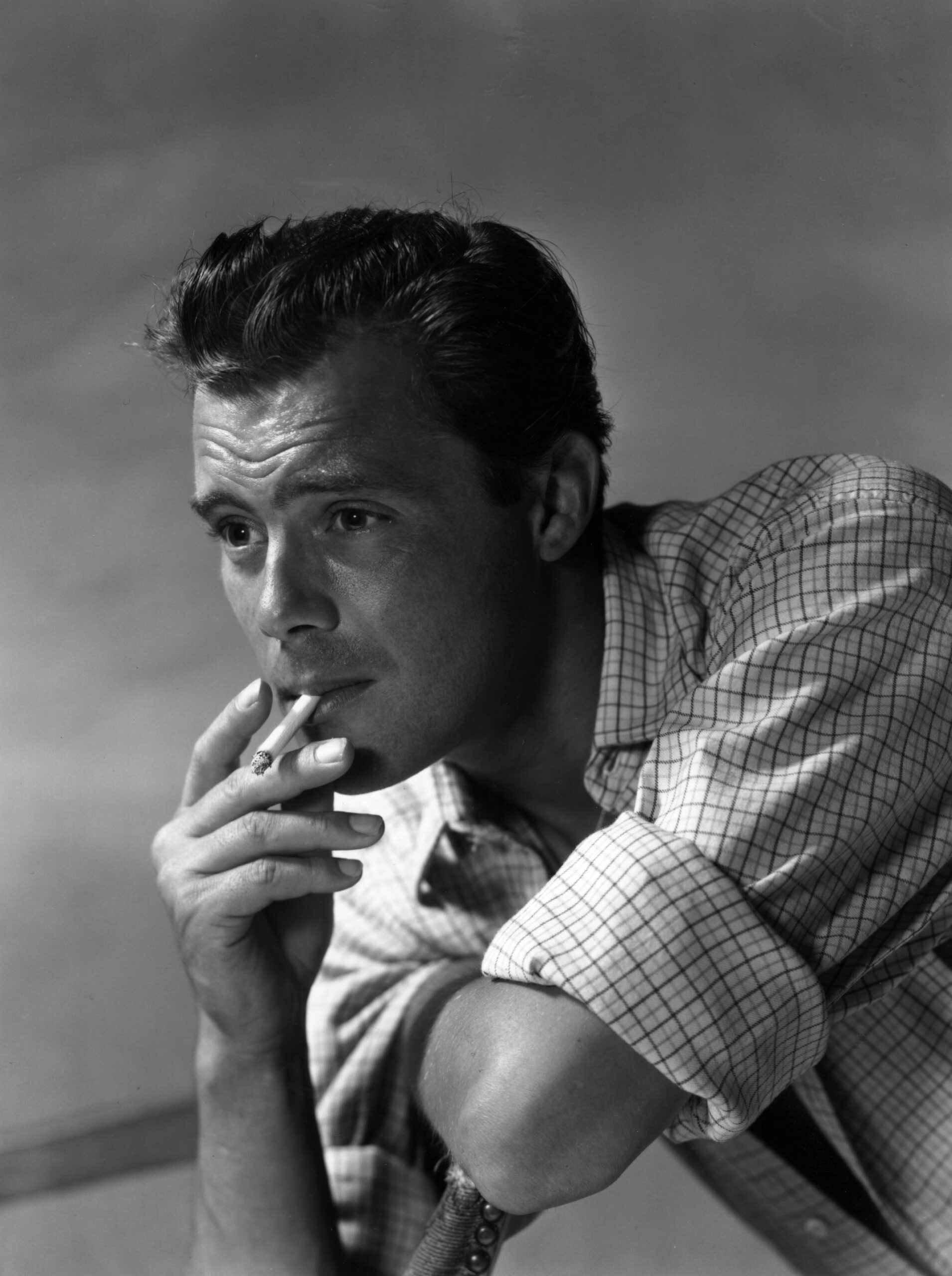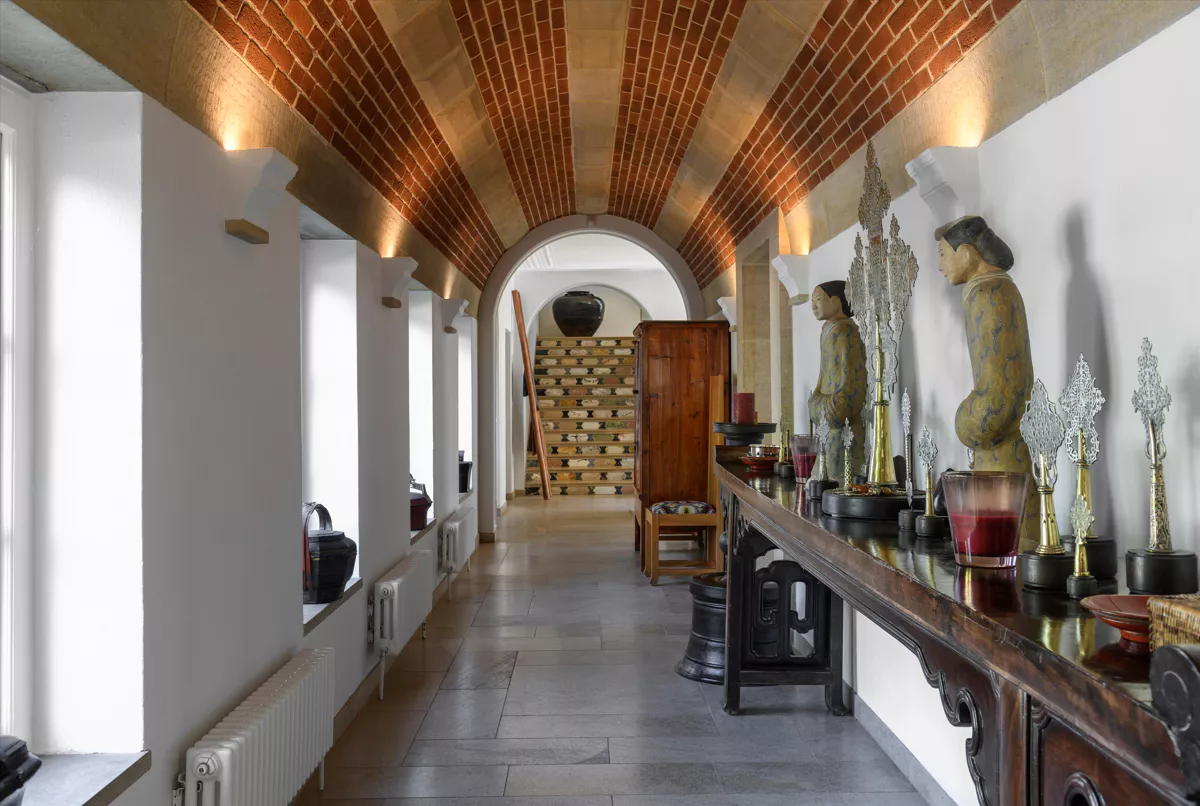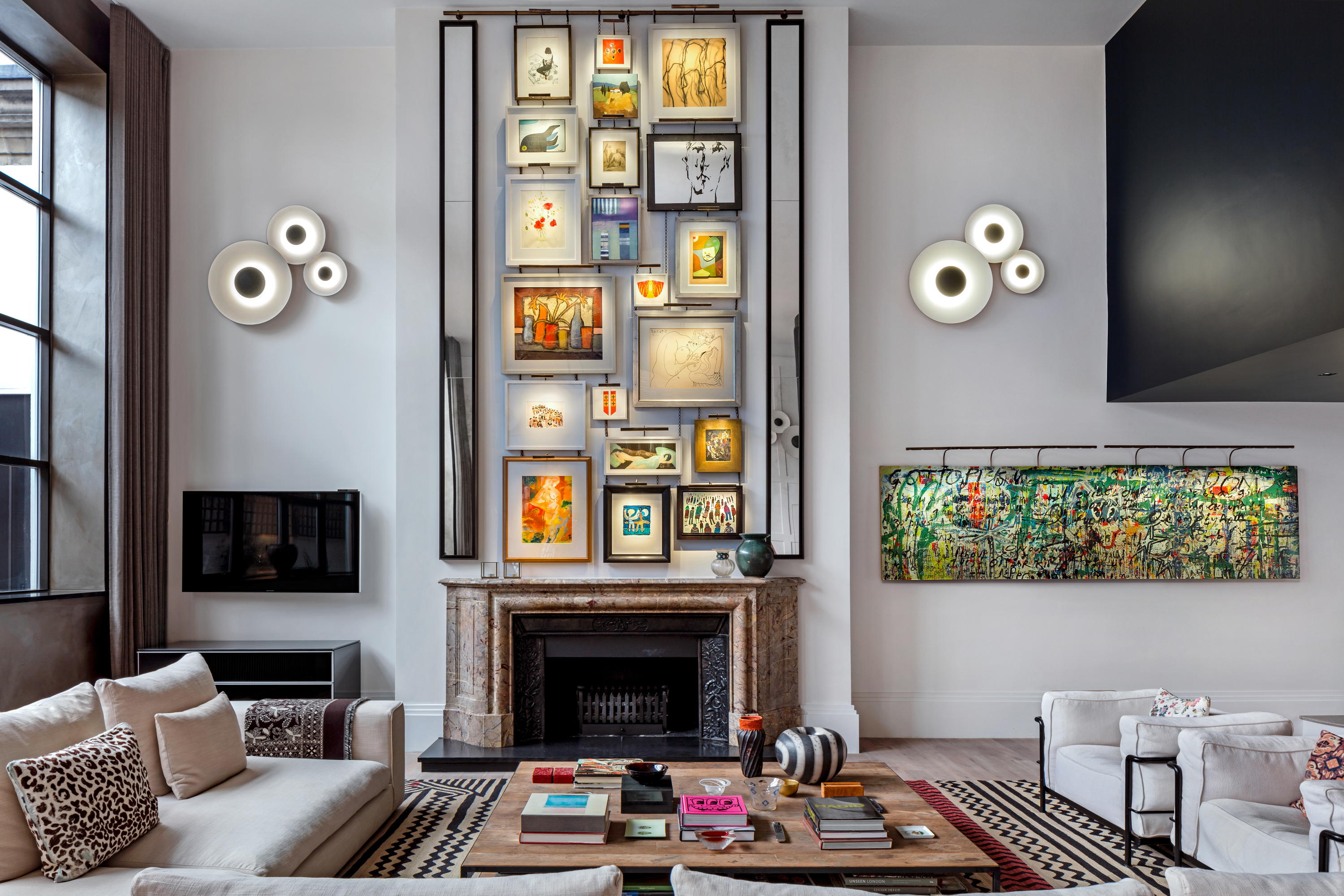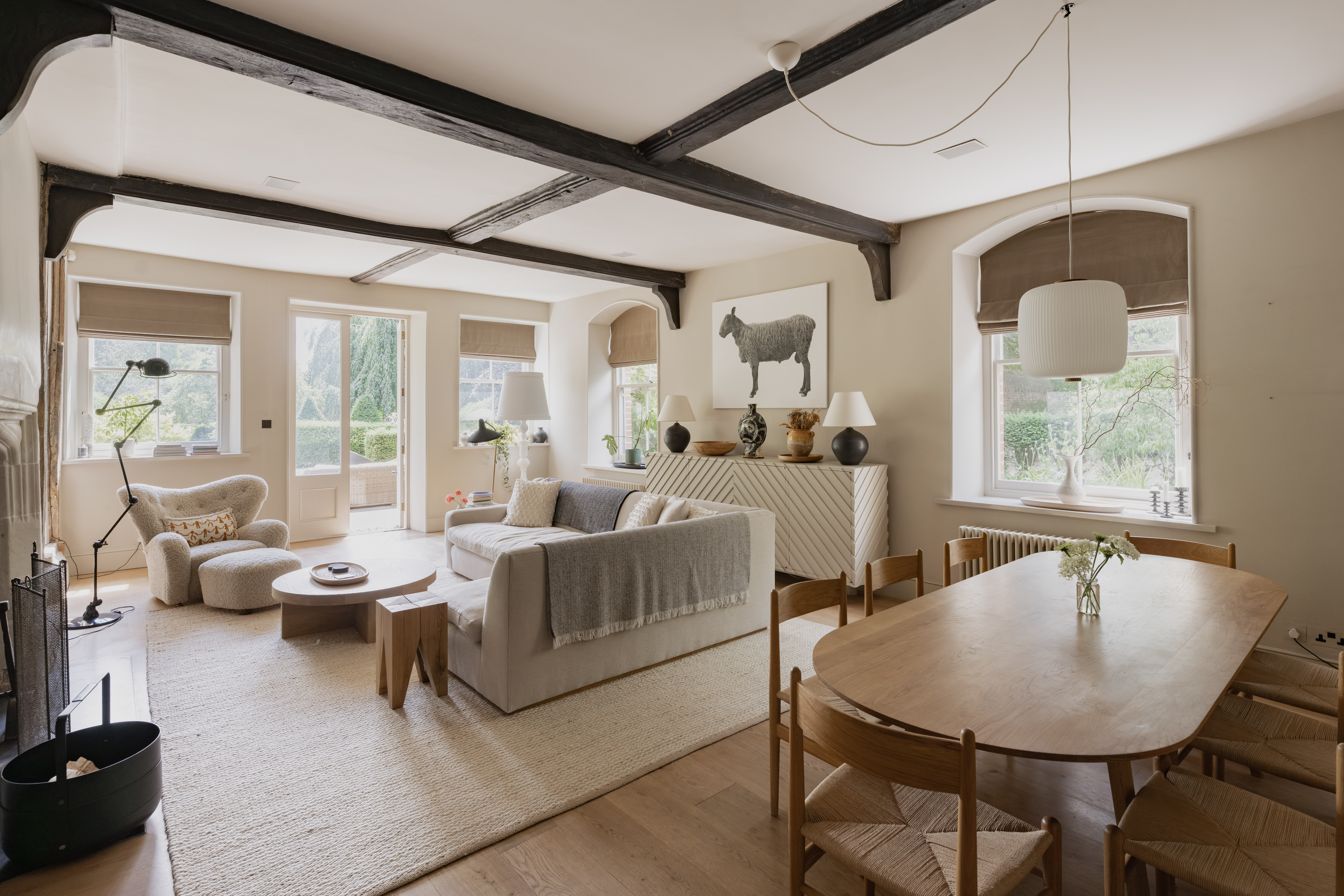An iconic movie star's £10 million home in Buckinghamshire has come to the market
Dirk Bogarde, one of Britain's most celebrated actors of the 20th century, took on and rescued this home in Buckinghamshire before selling it on to the wildly successful produce behind the 'Carry On' films. Now, Drummers Yard is looking for a new owner once more.


The former home of legendary actor and writer Sir Dirk Bogarde has come up for sale on the outskirts of Beaconsfield. Drummers Yard is for sale through James Crawford of Knight Frank with a guide price of ‘excess £10 million’.
It’s a place created by a visionary architect whose life and career never took off as it should have, but whose dream lives on in the ‘strangely simple shapes’ of this beautifully proportioned home.

The main house offers 10,422sq ft of light, bright and airy accommodation on three floors, including three principal reception rooms, a study, kitchen/breakfast room, seven bedrooms and eight bathrooms.
Further accommodation is provided in a detached two-bedroom cottage built on the site of an original set of outbuildings.

Drummers Yard has appeared in Country Life before, most notably when it was only recently complete. In January 1938, our then-editor Christopher Hussey went to visit the newly-built country house — called ‘Birchens Spring’ at the time — which had been designed for C. Rissik by John Campbell, a little-known English architect, and built by Messrs William Hartley of Slough.
Hussey wrote a two-part piece on the house, which appeared in the magazine on January 29 and February 5, 1938, in which he professed himself to be greatly impressed by the originality and maturity of Birchens Spring’s design, which combines ‘something of the provincial Roman villa, something of the English manor house, and something, too, of “modern” ’. Why, he wondered, had we never heard of Campbell before? The answer was simple: ‘because he was not here’. At least, not that often, his life story reveals.

John Archibald Campbell (1878–1948) was born in Wolverhampton, where he studied and later taught at the School of Art. In 1902, he met Heinrich Pössenbacher, the son of a Munich interior decorator, who offered him a job as chief designer. In July 1914, Campbell was appointed regius professor of Architecture at the Kunstgewerbeschule in Munich, Germany. However, the outbreak of war that year saw him interned for the duration before being repatriated to Britain in August 1918.
Exquisite houses, the beauty of Nature, and how to get the most from your life, straight to your inbox.

Between 1922 and 1928, Campbell was a partner in Falconer, Baker & Campbell, based at Amberley in the Cotswolds, where the practice designed several houses in the Arts-and-Crafts tradition. The partnership was dissolved in 1928, after which Campbell opened an office in Berlin. However, the economic depression of 1931 forced his return to England where he settled in Cornwall.

Here, between 1934 and 1939, he built three houses, similar in style to Birchens Spring, on the headland at Chapel Point, Mevagissey. It was typical of the ill luck that dogged his life that Campbell fell from the cliff and died in August 1948, when returning to Chapel Point after posting the papers for a planning appeal to continue the development.
During the 1950s, Birchens Spring was owned by a charitable trust, which ran it as a home for the children of parents suffering from TB. Following its closure, the neglected house was acquired in 1960 by Bogarde, who (according to an article in House & Garden in August 1961), renamed it Drummers Yard after ‘a charming lead figure of a 17th-century French drummer boy that had followed Bogarde from house to house’.

Concealed from the road by ‘birches, oaks, chestnuts and a positive barricade of rhododendrons,’ the imposing stone house stood ‘looking rather like a prison, with chipped grey stucco and rusting ironwork gradually succumbing to the onslaught of the untamed woods.’ Inside, ‘it had been precisely yet hideously partitioned-off into a warren of half-glazed, cream-painted corridors, inscriptions and injunctions’.

Fortunately, apart from the removal of these partitions, there was little rebuilding to be done and the house was soon white-washed, its ironwork glistening black against the grey slate roof and the most intrusive trees cut back to give a breathing space of lawn between house and woods. The entire renovation was planned and supervised by Bogarde himself in between bouts of filming.
Two years later, he sold Drummers Yard to his friends and associates, Peter Rogers, the producer of the 31 ‘Carry On’ films, and his wife, Betty E. Box, who produced the ‘Doctor’ series of films that helped make a star of the young Bogarde.

Some 30 years later, Rogers sold Drummers Yard, listed Grade II, to a property developer who was fascinated by its origins and set out to reverse alterations made during the Rogers era.

In 1997, he sold the house to the present owner, whose much-loved family home it has been for the past 27 years. During that time, he and his wife modernised and upgraded the interior and created the delightful gardens that surround the house, with lightly wooded grounds to the south and east flanking a series of water gardens that flow down to a pond.
Drummer’s Yard is for sale at £10m via Knight Frank — see more details and pictures.

Credit: Strutt and Parker
Best country houses for sale this week
An irresistible West Country cottage and a magnificent Cumbrian country house make our pick of the finest country houses for
-
 Missing ponies, Highland games, and a lighthouse in the Shetland Isles. It's a very Scottish Country Life Quiz of the Day
Missing ponies, Highland games, and a lighthouse in the Shetland Isles. It's a very Scottish Country Life Quiz of the DayImpress your friends north of the border by scoring highly on all things Scotland.
By Country Life Published
-
 TM Lighting
TM LightingTM Lighting is the leading specialist in art lighting.
By Country Life Published
-
 A private island in the Thames Estuary is up for sale at £50,000, complete with its own Victorian fort
A private island in the Thames Estuary is up for sale at £50,000, complete with its own Victorian fortDarnet Fort, is seeking a new owner — but it's going to need someone of great vision and spirit.
By Toby Keel Published
-
 A 500-year-old house with interiors by Soho House's designer, gardens by an RHS Chelsea gold medallist and its own grass tennis court
A 500-year-old house with interiors by Soho House's designer, gardens by an RHS Chelsea gold medallist and its own grass tennis courtHaslingfield Manor is an extraordinary mix of styles and ideas, from Tudor Britain to the cutting edge of modern design. Penny Churchill takes a look.
By Penny Churchill Published
-
 Utterly wonderful country homes for sale across Britain, from a 10-bedroom mansion to a Devon hideaway, as seen in Country Life
Utterly wonderful country homes for sale across Britain, from a 10-bedroom mansion to a Devon hideaway, as seen in Country LifeFrom an irresistibly charming house in Devon to a 400-year-old commutable home in Hertfordshire, here's our pick of some of the best homes to come to market via Country Life in the past week.
By Toby Keel Published
-
 The London house where Rolls-Royce's co-founder Charles Rolls tinkered with his very first car is for sale at £17 million
The London house where Rolls-Royce's co-founder Charles Rolls tinkered with his very first car is for sale at £17 millionCharles Rolls, the engineer and co-founder of Rolls-Royce, got his hands dirty when using the stables of this fine London home as a makeshift garage. Annabel Dixon reports.
By Annabel Dixon Published
-
 A vineyard for sale on the slopes above 'the best beach in Britain' is for sale at just £650,000
A vineyard for sale on the slopes above 'the best beach in Britain' is for sale at just £650,000In the beautifully unspoilt Devon village of Bantham, an award-winning vineyard is for sale. Toby Keel takes a look.
By Toby Keel Published
-
 This spectacular 14th-century castle has had its price cut by £7.5 million. Here's why
This spectacular 14th-century castle has had its price cut by £7.5 million. Here's whyThe art and science of being an estate agent is never trickier than when dealing with homes that are being sold for the first time in centuries — and Ripley Castle in Yorkshire provides the perfect example. Lucy Denton explains more.
By Lucy Denton Published
-
 A simply perfect thatched cottage in Devon, with charm, walled gardens and all the space you need for family life
A simply perfect thatched cottage in Devon, with charm, walled gardens and all the space you need for family lifeThatched cottages are often pretty, but pretty small — but Julie Harding finds one brings which blends cottage charm with the space of a country manor.
By Julie Harding Published
-
 'A rare gem' of a country house, in 163 acres of the idyllic Colne Valley, just 50 minutes from the City
'A rare gem' of a country house, in 163 acres of the idyllic Colne Valley, just 50 minutes from the CityThe Regency-style Over Hall in Colne Engaine is a country house whose previous owner has spent 40 years getting everything just right. Penny Churchill takes a look.
By Penny Churchill Published

